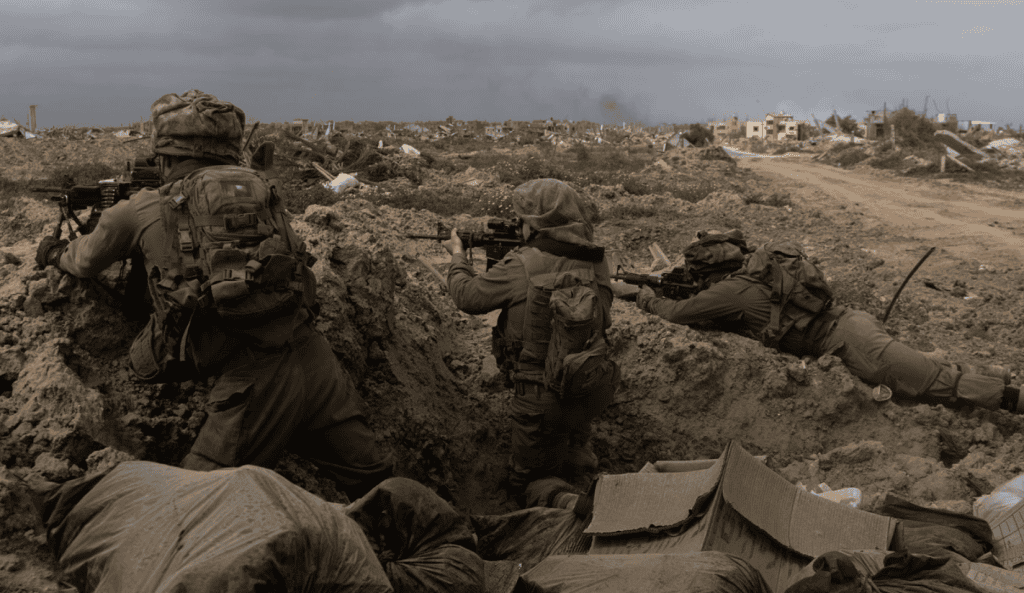
For the first time in two months, rockets were fired from Gaza at Ashdod and Ashkelon, two coastal Israeli cities south of Tel Aviv which were the major targets of hundreds of rocket attacks during the Hamas attack on October 7 and in the months following. After Israel launched its ground maneuver in Gaza in late October however, the rocket fire reduced.
In the last two months, rocket fire from Gaza has been reduced to near-zero in terms of daily launches. The last large barrages were on new years day just after midnight and again in mid-January when a barrage of fifty rockets targeted the southern Israeli city of Netivot. The IDF has reduced the time necessary to find and destroy rocket launchers and the perpetrators behind the launches. This has been made possible by IDF operations in various parts of Gaza wherein IDF forces essentially halved the strip into two by controlling a road across Gaza. It has also been made possible by a shift in tactics to target the launchers and close the loop on perpetrators. After the Netivot attack in January for example, the IDF found the rocket launcher within a day.
The IDF said on March 25 that “the Hamas terrorist organization launched rockets from a humanitarian area in Deir al-Balah; the IDF located and struck the post from which the launches were fired toward the city of Ashdod, along with additional terror targets.” The IDF also said that after the attack targeted Ashdod, the IDF sent in warplanes to destroy the post from which the launches took place. “Following the strike, secondary explosions were identified, indicating the presence of additional weapons in the area,” it said. The IDF emphasized that the attack took place from a “humanitarian area” in Deir al-Balah. An infographic put out by the IDF showed launch posts near tents, though it was not clear how this area was demarcated as a humanitarian area. Deir al-Balah is one of several areas in central Gaza known as “central camps” which continue to have a Hamas presence. Many of these areas, which are built around refugee camps established in the 1950s, are densely populated and have not been cleared by the IDF. Along with Rafah, they remain a Hamas stronghold.
The rocket launches on March 25 came as the IDF continued to operate around the Shifa hospital complex. The IDF’s 162nd division has been controlling the Shifa sector since the IDF raid began the evening of March 17 and has cleared several buildings in the area. The Nahal brigade’s reconnaissance unit was used in the clearing, and they “located many weapons that were hidden inside the various medical devices in the MRI complex as well as on the rooftop of the hospital,” the IDF said. In total, the IDF has detained around 800 suspects in the area, with 500 of them identified as Hamas and Palestinian Islamic Jihad members. Moreover, up to 180 terrorists have been eliminated in gunfights near the hospital, the IDF said in a briefing on March 25.
According to the same IDF briefing, Israel is continuing to make preparations for an operation in Rafah. A large number of civilians are sheltering in that area and will need safe passage out of the city. Meanwhile, Israel is also in touch with US Central Command about US plans for a temporary floating dock off the coast of Gaza to facilitate humanitarian aid. Prior to the dock being built, around 30 trucks a day are entering northern Gaza and air drops continue. In addition, a second shipment of aid is scheduled to arrive by sea from Cyprus.
The renewed rocket fire suggests that Hamas is trying to reconstitute itself, and the Shifa raid shows that Hamas is concentrating commanders in northern Gaza after suffering losses in November. Meanwhile, the IDF continues operations in Khan Younis in southern Gaza, having carried out dozens of strikes on targets.







